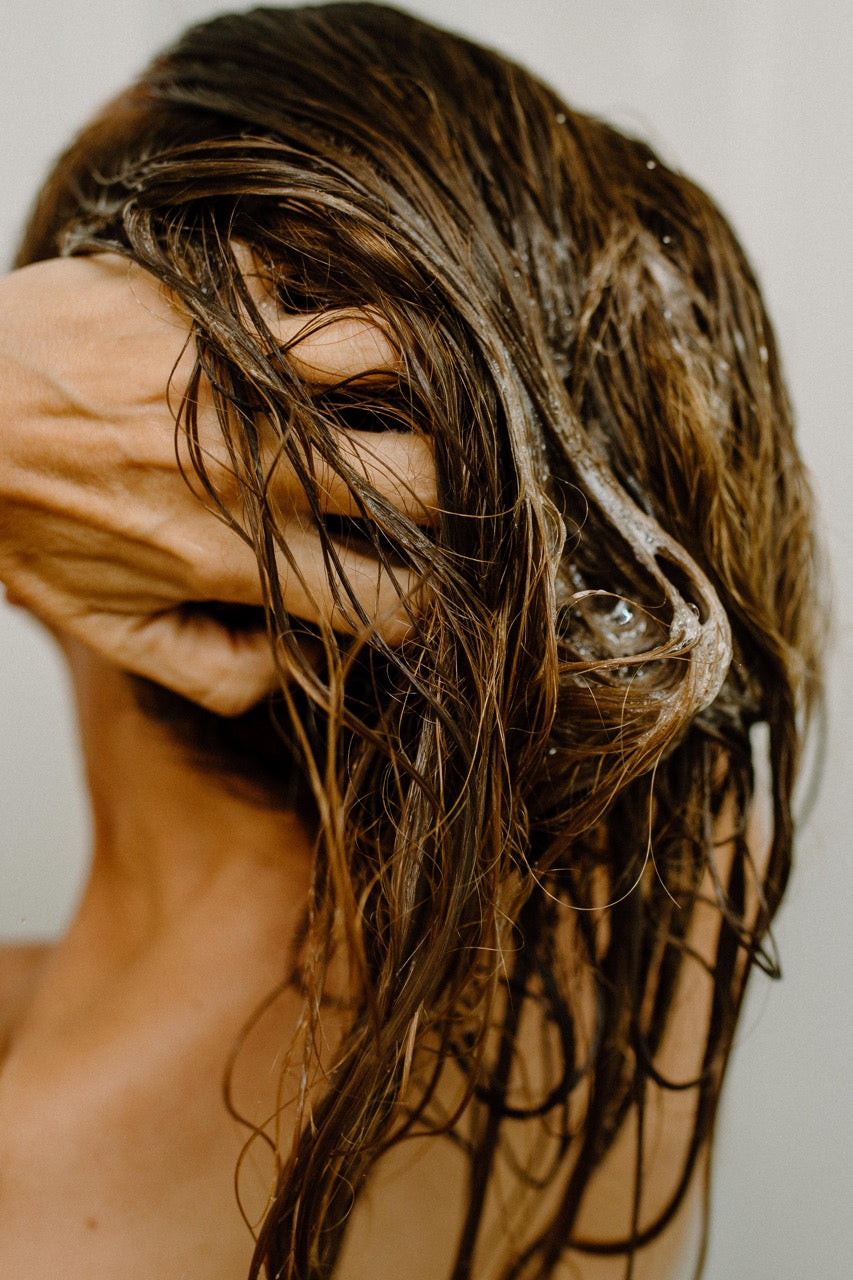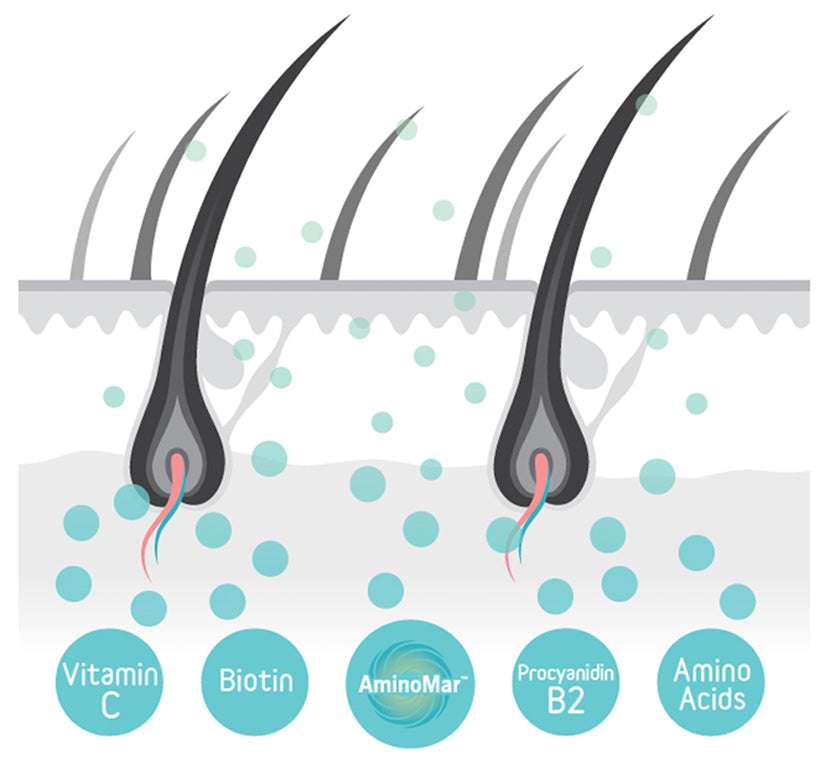
Thinning Hair - Facts & Myths
Hair loss is caused by a variety of factors in women and men. It is important to identify what is preventing your body from effectively absorbing the nutrients it needs to grow healthy hair.

Hair Life Cycle Phases
Each hair passes through four phases in its life cycle: anagen, catagen, telogen and exogen. As the length of the anagen (growing) phase decreases over time, hair may become weaker and thinner.
Viviscal PRO works so effectively is that it nourishes the hair follicle during the anagen phase, strengthening thin and wispy hair through the consistent intake of nutrients absorbed into the follicle.
4 Phases
-
Anagen
Growing
-
Catagen
Regression
-
Telogen
Resting
-
Exogen
Shedding
Facts: Causes of Thinning Hair
-

Heredity
Genetics strongly influence hair loss, no matter your gender. The genetic component of balding still isn’t well understood, but it’s thought that it involves many different genes. When hair loss is caused by your genetics, it occurs in a predictable pattern often referred to as male pattern baldness (MPB) or female pattern baldness (FPB).
-

Hormonal Changes
Hormonal changes associated with menopause can affect the healthy hair growth cycle. Other hormonal changes in the body may affect hair thinning and loss in some women. Women can experience problems with their hair due to a hormone imbalance and increased sensitivity to the male hormones found naturally in women’s bodies.
-

Nutrition
A diet rich in protein, vitamins and minerals is essential for healthy hair and hair growth. The hair follicle is a nonessential tissue and, therefore, it is often one of the last parts of the body to receive nutritional substances. Therefore, any long-term deficiencies may lead to premature hair loss.
-

Stress
In the face of everyday stress, the adrenal gland produces more adrenaline, which can lead to an increase in the production of testosterone and dihydrotestosterone (DHT). If there are not enough other hormones present to counterbalance this, this imbalance can affect healthy hair growth.
-

Medical Conditions and Medications
Hair loss stems from various medical conditions and medications, impacting the hair growth cycle differently. Autoimmune disorders like alopecia areata can prompt the immune system to attack hair follicles. Certain medications, including those for cancer (chemotherapy), blood thinners, antidepressants, and acne treatments, are associated with hair loss.
-

Hairstyles and Treatments
Excessive use of aerosol sprays, hair dyes, hair irons or curlers may result in damaged hair in the long term. Men and women who find their healthy hair is being affected may want to reconsider the products that they’re using and consider other nutritional supplements and healthier styling methods.
Common Hair Loss Myths
-
Hair Loss Only Happens With Age
Although hair loss is usually associated with men in their 40s, 50s, 60s and above, it’s possible to start losing your hair at any age, including in your 20s and 30s. Some men even start to lose hair in their teens.
-
More Testosterone Causes Baldness
Male pattern baldness, the most common form of hair loss in men, is caused by a combination of your genes and the effects of a hormone called dihydrotestosterone, or DHT. The body converts a small percentage of testosterone into DHT.
-
Wearing a Hat Causes Hair Loss
While wearing a hat that’s overly tight or heat constrictive might theoretically affect the amount of blood that’s able to flow to your hair follicles, there’s no reliable scientific research to support this theory.
-
Too Much Washing Causes Hair Loss
While washing your hair too frequently can wash away sebum (a natural oil-like substance that’s produced by your skin) and dry out your hair, there’s no evidence that shampooing regularly can affect your DHT levels or contribute to male pattern baldness.
Improve Your Hair With Our Thin to Thick Hair Care Range
-
Viviscal PRO Professional Hair Growth Supplements
Login as a Pro to View Price
-
Viviscal PRO Thickening Elixir
Login as a Pro to View Price
-
Viviscal PRO Thickening Shampoo
Login as a Pro to View Price
-
Viviscal PRO Thickening Conditioner
Login as a Pro to View Price











